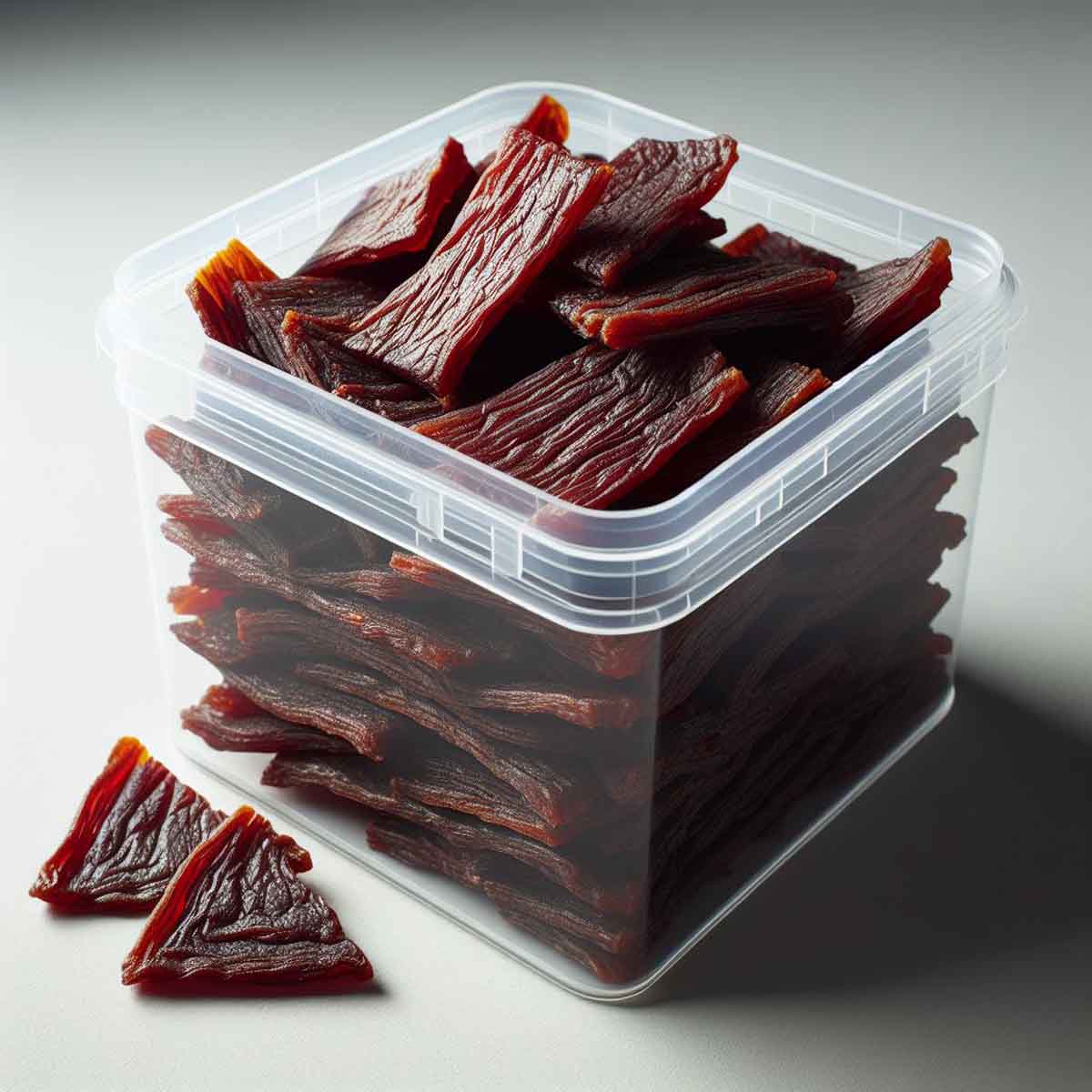Do you want your beef jerky to taste just as fresh and savory months after you made or bought it? I’m here to guide you on how to store beef jerky the right way. Whether your jerky is homemade or store-bought, proper storage is the secret to extending its flavor and shelf life.
Table of Contents
Understanding Beef Jerky Storage
What Affects the Shelf Life of Beef Jerky?
The shelf life of beef jerky isn’t a game of chance—it’s a science. Before we get to how to store beef jerky, let’s talk physics. When I think about making my beef jerky last, it’s all about controlling three elements:
- Moisture: The less moisture, the longer the beef jerky will last.
- Temperature: Consistent, cooler temperatures are ideal.
- Air and Light: Exposure can lead to degradation of quality.
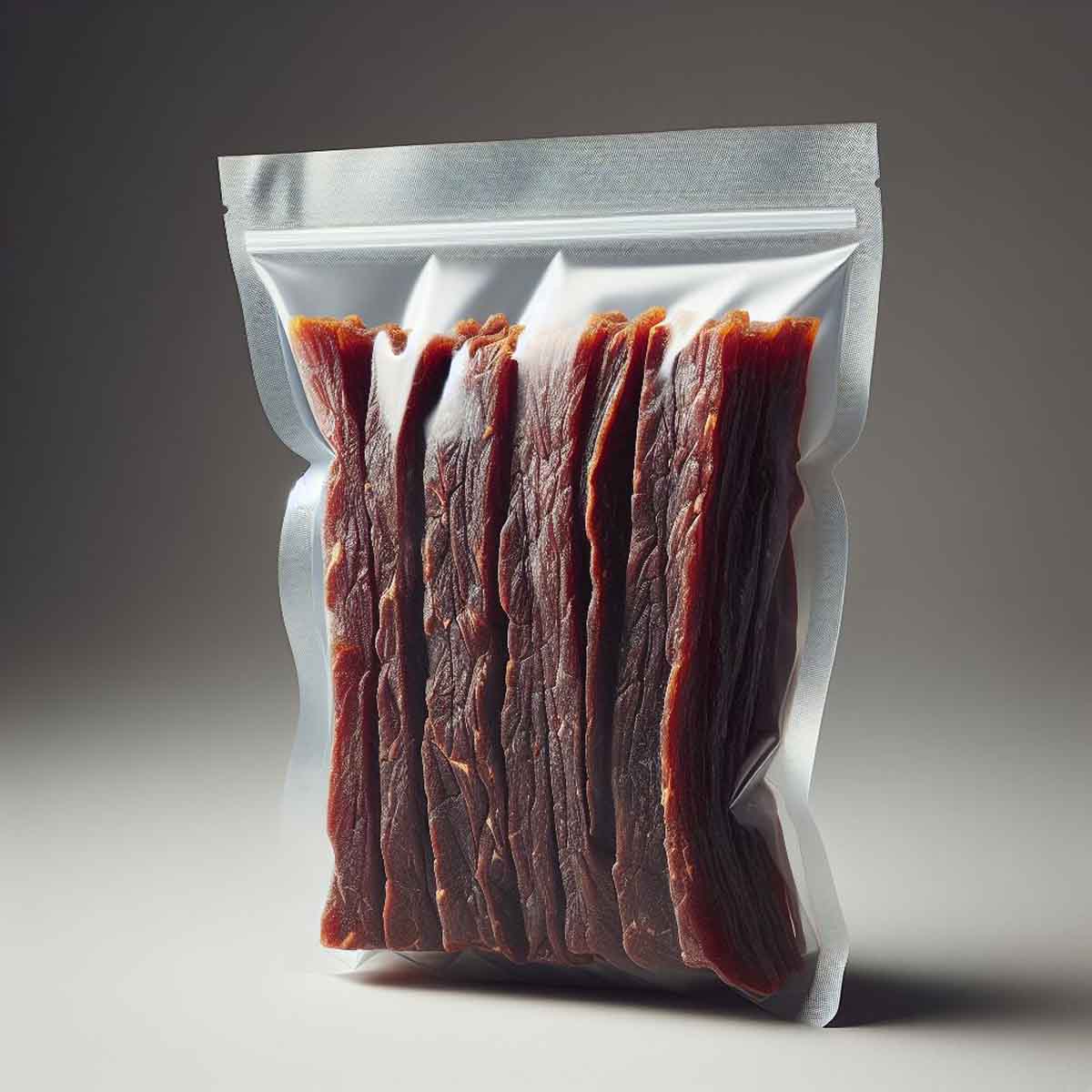
The Role of Proper Drying in Beef Jerky Preservation
Now, proper drying is your first defense against spoilage. Here’s the lowdown:
- Drying Process: Beef jerky must be dehydrated to a perfect crisp, which means all the moisture needs to be zapped out effectively.
- Heating: The USDA recommends heating meat to 160 °F before dehydrating to kill any nasty bacteria that might be lingering. This is a crucial step for both food safety and storage.
The Enemy of Jerky: Bacterial Growth
Bacteria are the arch-nemeses of beef jerky. It’s simple: if there’s bacteria, your jerky won’t last. Heating your meat properly and maintaining the correct drying temperature (between 130 to 140 °F) are your weapons against these jerky-destroying microorganisms.
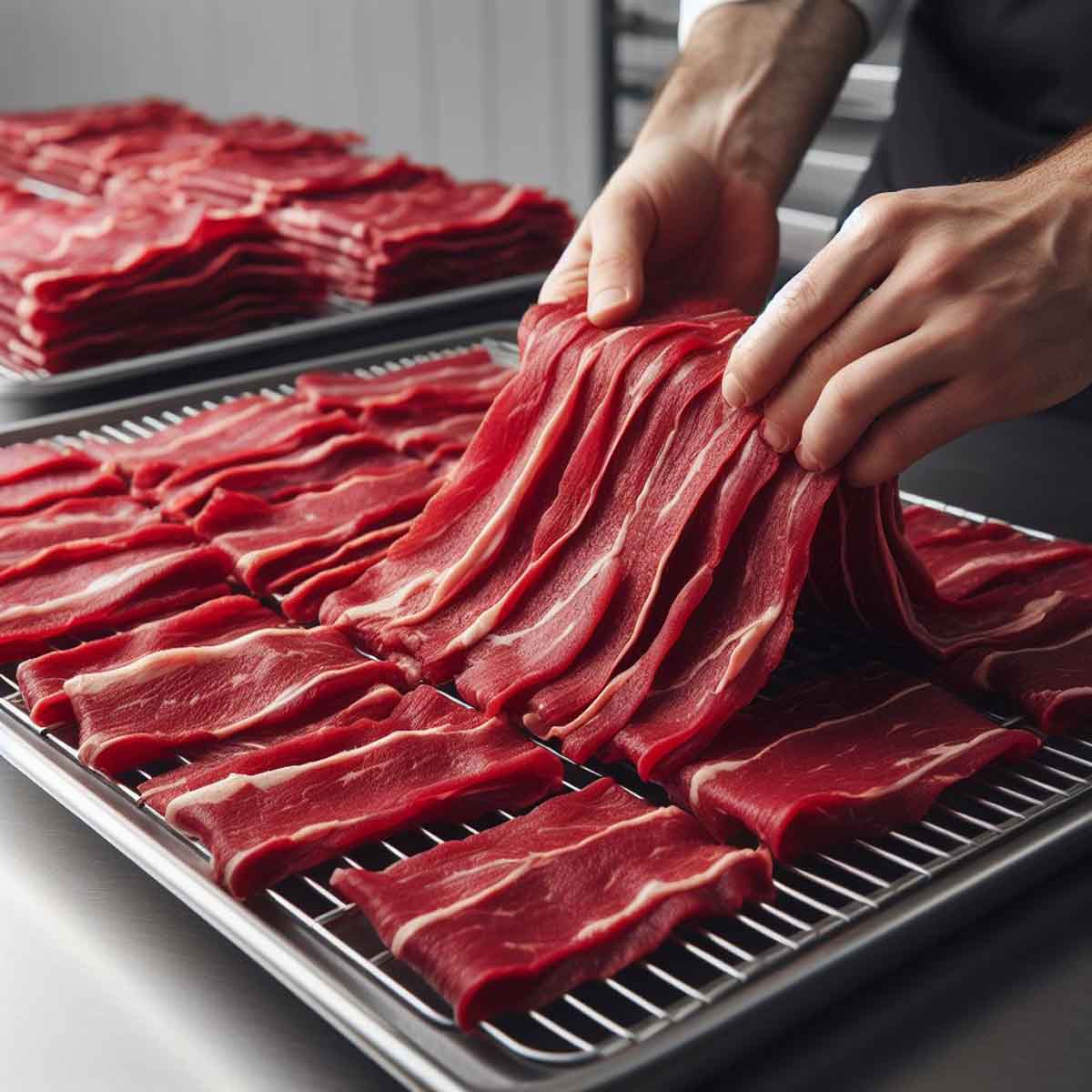
How to Store Beef Jerky
Immediate After-Cook Storage: Keeping Your Jerky Safe
Once your beef jerky is done, it’s crucial not to just leave it out. I like to:
- Let it cool down without covering it up, to prevent moisture from creeping back in.
- Move it to a lightly covered container, allowing air to circulate to keep that perfect jerky texture.
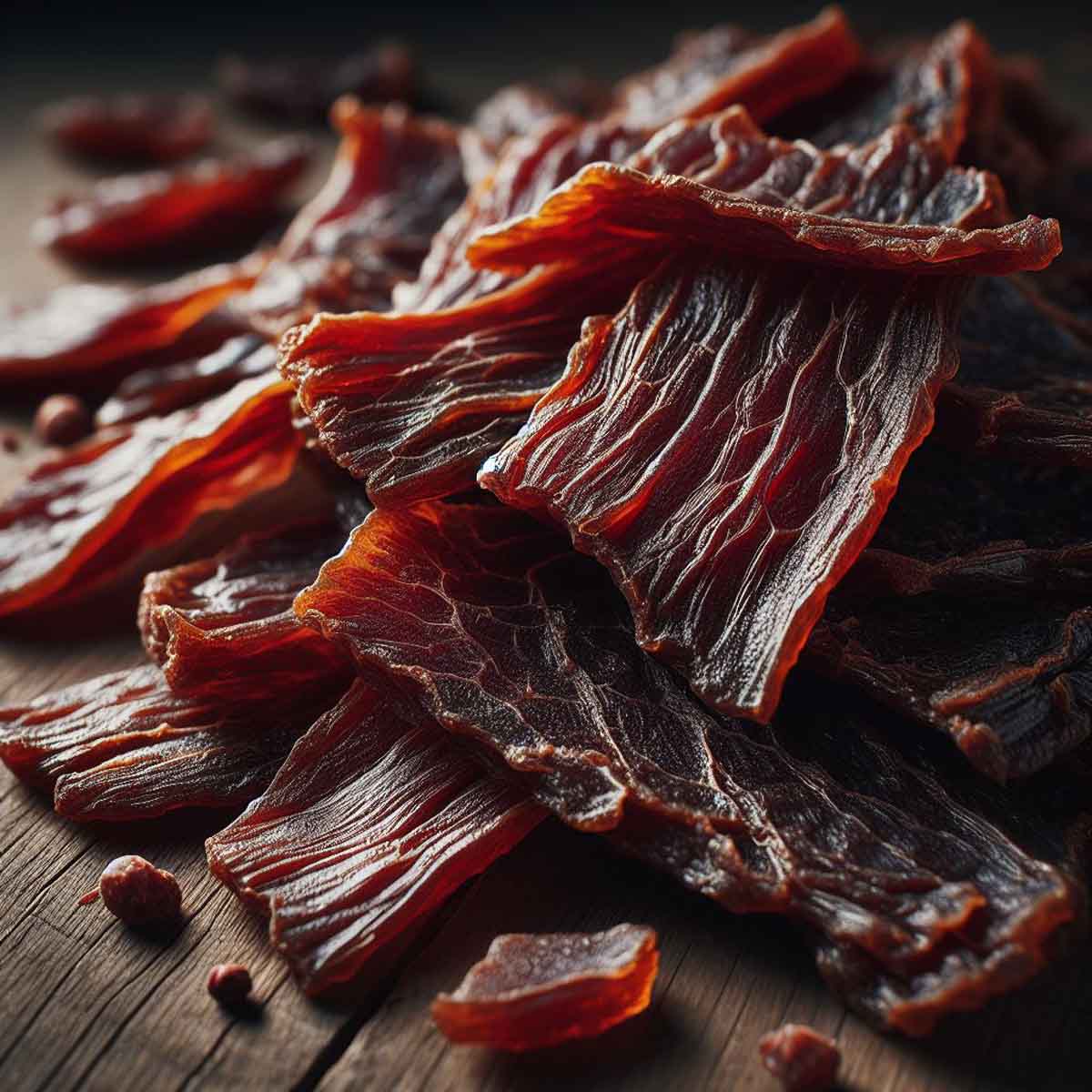
Choosing the Right Storage Container
The eternal battle: plastic bag or airtight container? Here’s what I’ve found works best:
- Airtight Container: These are the superheroes of storage. They keep out air, moisture, and light—a triple threat!
- Plastic Bag: More like a sidekick, plastic bags can work, but they’re more susceptible to letting air sneak in, even when sealed tight.
And let’s not forget about mason jars and vacuum seal bags—both of these are like the fortress of solitude for beef jerky, keeping it safe and sound for the long haul.
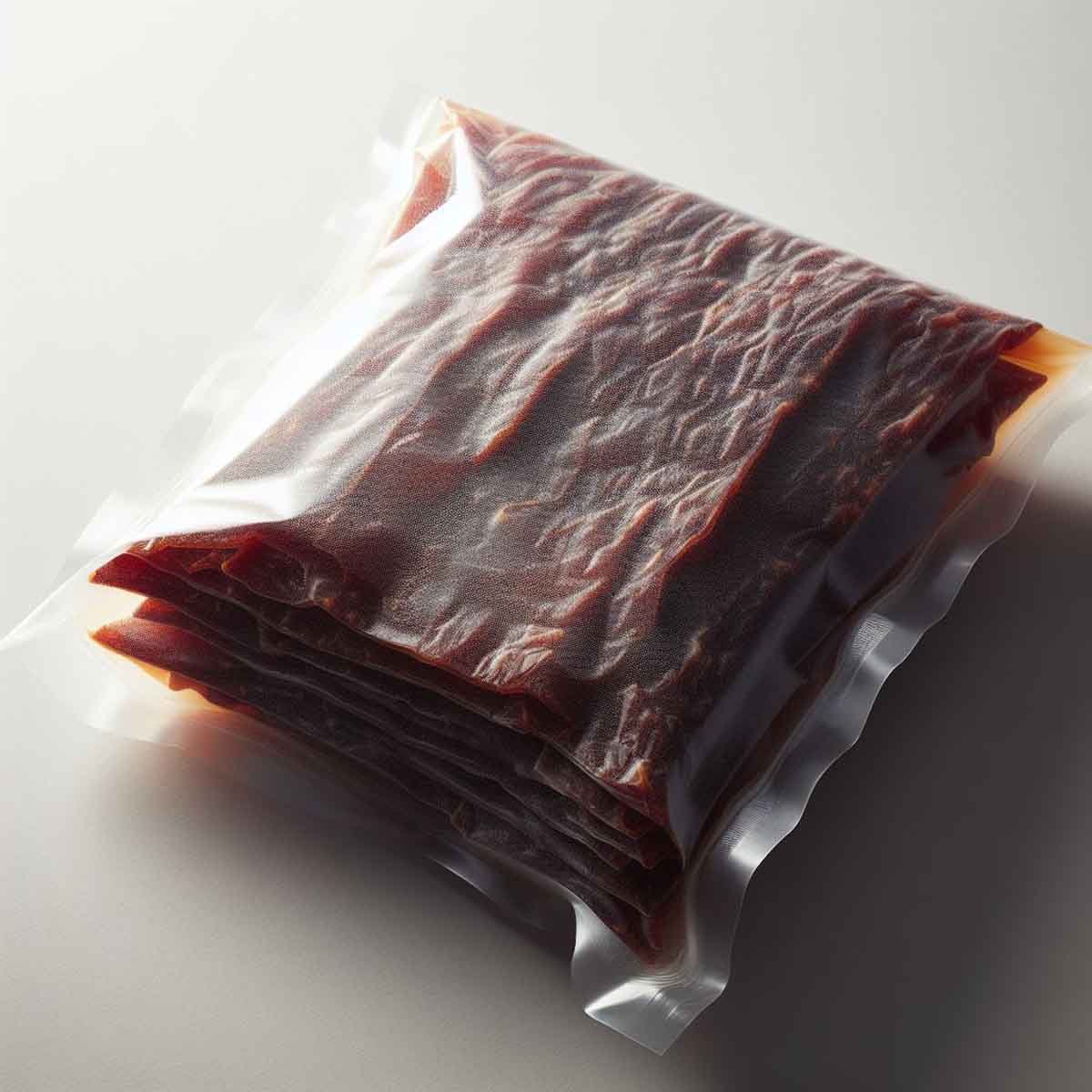
Optimal Environment: Where to Store Your Beef Jerky
Choosing the right spot to store your jerky is as important as the container you put it in. Here’s the scoop:
- Room Temperature: A dark, cool pantry or cabinet is your go-to place for a shorter storage period.
- Cool Place: Sometimes room temp just won’t cut it. If you live in a warmer climate, finding a cooler spot can make all the difference.

Long-Term Storage Solutions
The Benefits of Vacuum Sealing
If I want my jerky to last for what feels like an eternity, vacuum sealing is my method of choice. Here’s why:
- Keeps Out Air: By removing as much air as possible, vacuum sealing prevents oxidation and keeps your jerky fresh.
- Guards Against Freezer Burn: When you’re storing jerky in the freezer, vacuum sealing helps protect it from that dreaded freezer burn.
Freezing Beef Jerky: Is It a Good Option?
You bet it is! Freezing beef jerky can extend its life significantly. Just remember:
- Proper Packaging: Use freezer bags or vacuum seal bags to protect against freezer burn.
- Expiration Awareness: Keep track of the dates. As USDA recommends, homemade jerky can last 1-2 months, while unopened store-bought jerky can go much longer.
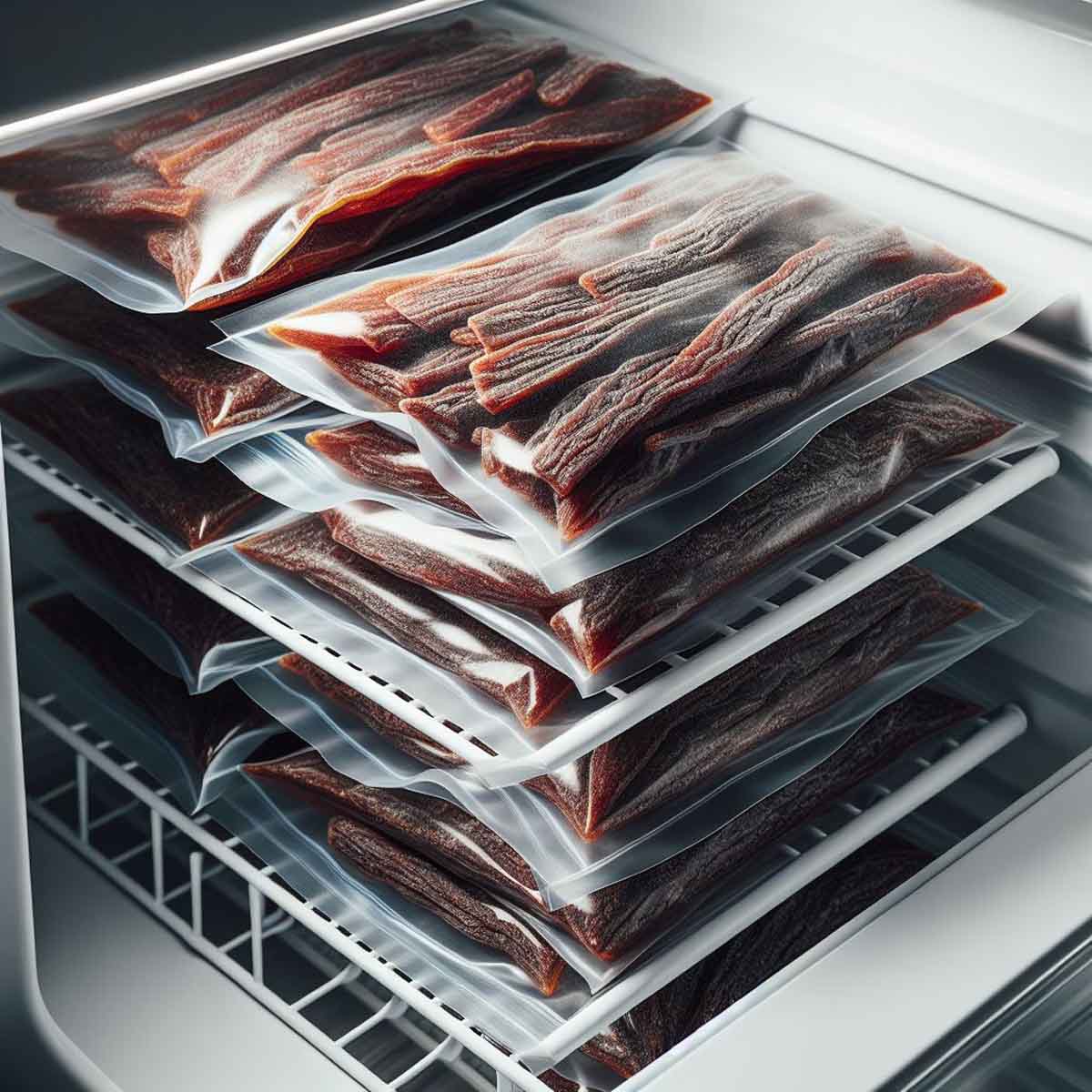
Specialty Storage: Mylar Bags and Food-Grade Desiccant Bags
These storage options are like the VIP section for your jerky:
- Mylar Bags: They block out light and are pretty strong at keeping moisture at bay.
- Desiccant Bags: Pop one of these into your storage container to wick away any lingering moisture.
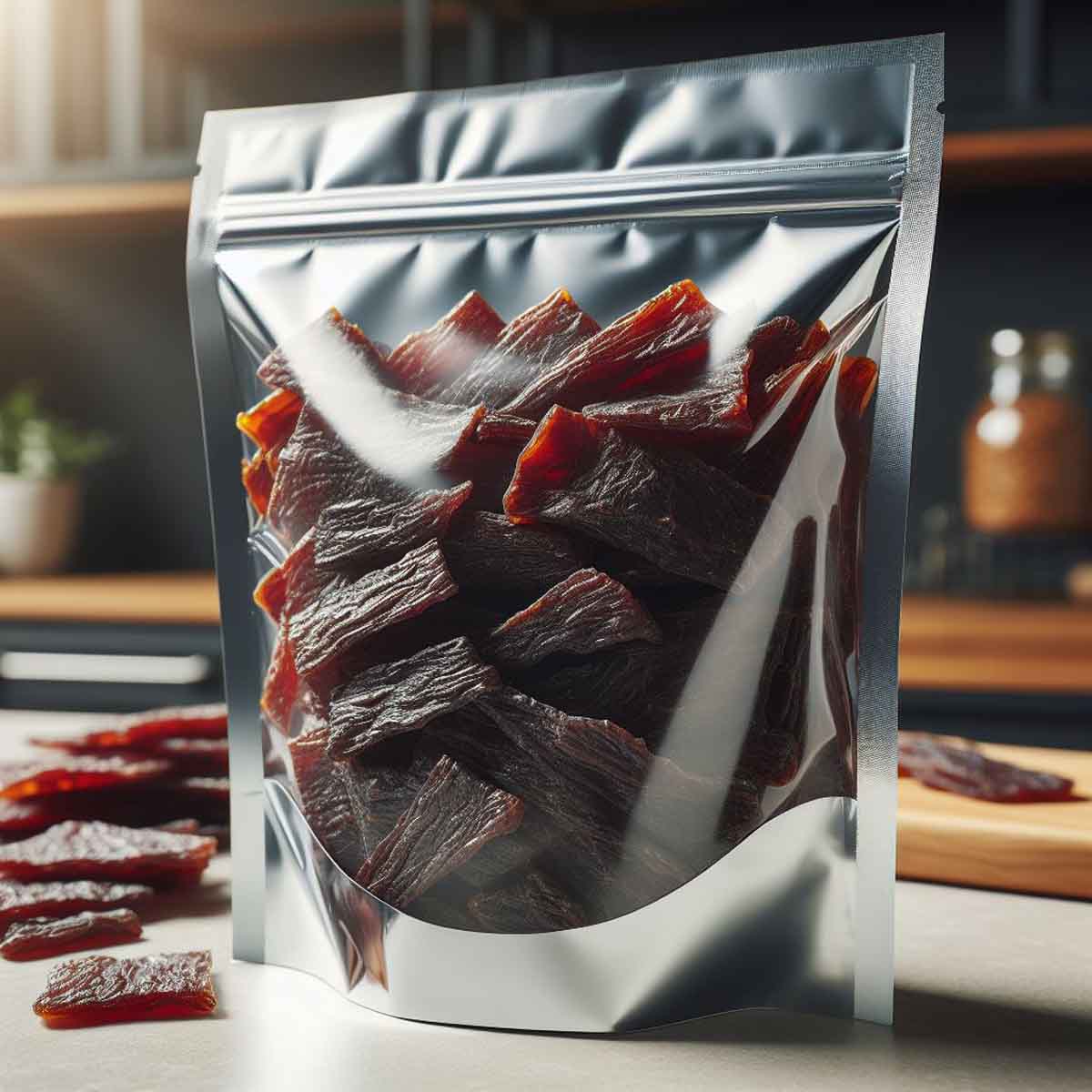
Signs Your Beef Jerky Has Gone Bad
Visual and Tactile Spoilage Indicators
Not sure if your jerky is still good to eat? Pay attention to these signs:
- Color Changes: If your jerky has developed a darker hue or has any discolored spots, it might be time to toss it.
- Texture: Good jerky is firm yet pliable. If it feels unusually hard, brittle, or has grown mold, it’s a no-go.
When to Trust the Expiration Date
Here’s what I’ve learned about those dates on the packaging:
- Best-By Date: This is more about quality than safety. Your jerky could still be fine a bit after this date, but don’t push it too far.
- Expiration Date: This is the manufacturer’s assurance that the jerky is safe to eat up to this day, provided it’s unopened and stored correctly.
Remember, homemade jerky won’t last as long as the commercial kind, so if you’ve made your own, consume it within a couple of months for the best flavor and safety.
Special Considerations for Homemade Beef Jerky Storage
Picking the Right Meat and Preparation Methods
When it comes to homemade beef jerky, not all meats are created equal. Here’s what I swear by:
- Lean Meat: Fat is the enemy of longevity, so the leaner the cut, the better. Plus, the right cut means less work trimming off fat.
- Thickness and Temperature: Thin, even meat strips are essential. They dry uniformly, reducing the chances of spoilage. Shoot for an internal temperature of 160 °F to ensure food safety. This is recommended by the USDA.
Why not try making your own? Check out my detailed recipe for marinating beef jerky for a delicious homemade batch.

Homemade Jerky Additives and Their Effects
Additives can be a game-changer for extending the life of your homemade jerky. Here’s the rundown:
- Preservatives: Sodium nitrate and celery juice powder can help prevent bacterial growth, giving your jerky a longer shelf life.
- Natural Preservatives: Consider natural options like vinegar or lemon juice for a preservative boost, adding both flavor and longevity to your jerky.

FAQ – Answering Common Beef Jerky Storage Questions
How long does homemade jerky last compared to store-bought jerky?
- Homemade jerky typically lasts 1-2 months, while unopened store-bought jerky can last up to a year if stored properly.
Does beef jerky need to be refrigerated?
- It’s not essential for short-term storage, but for long-term or in warmer climates, refrigeration can extend its freshness.
What are vacuum-sealed bags, and do they help with jerky storage?
- Vacuum-sealed bags are specialized bags that remove all air, creating an airtight seal. They are excellent for prolonging the shelf life of beef jerky.
Can you revive jerky that has started to dry out?
- While you can’t fully restore dried-out jerky, rehydrating it in a cooking liquid can make it more palatable if it’s overly hard.

Innovative Jerky Storage Tips and Tricks
Creative Container Uses for Jerky Storage
Even the container you choose can add a little extra protection for your jerky. Here are some innovative ideas:
- Glass Jars: Not just for looks—these are perfect for blocking out light and keeping air at bay. Just make sure the seal is tight!
- Paper Bags: These can be a surprisingly good option for short-term storage, allowing the jerky to breathe a little and stay dry. Just keep them away from moisture!
The Do’s and Don’ts of Beef Jerky Storage
To seal the deal, here’s a neat list of best practices and common pitfalls:
Do:
- Store in a cool, dark place
- Keep in an airtight container or vacuum-sealed bag
- Use desiccants for extra moisture control
- Check your jerky regularly for any signs of spoilage
Don’t:
- Expose jerky to direct sunlight or heat
- Leave jerky in a non-airtight container for long periods
- Ignore expiration dates, especially for store-bought jerky
- Forget about jerky in the back of the pantry beyond its best by date
After learning about the best storage techniques, you might be eager to create your own jerky. Dive into my step-by-step beef jerky marination guide to start your jerky-making journey.
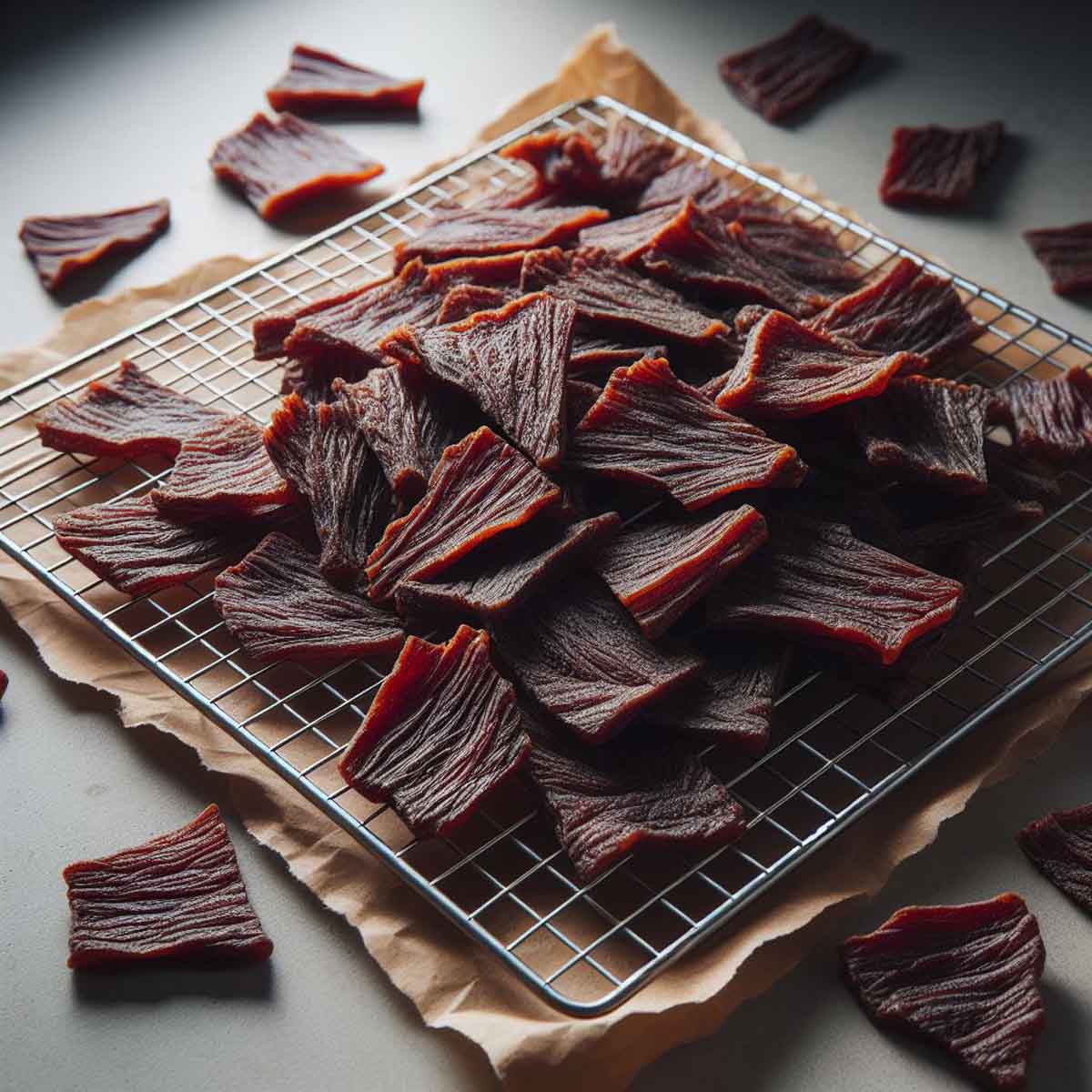
Wrap Up: Achieving the Perfect Jerky Experience
Storing beef jerky properly isn’t just about making it last longer. It’s about preserving those moments of savory delight for as long as possible. By following these detailed tips and tricks for beef jerky storage, you’re not just saving food—you’re ensuring that each bite maintains that just-made freshness and taste.
So how to store beef jerky? Remember, whether it’s a zip-top bag in a pinch or the investing in a vacuum sealer for the long term, the key is reducing exposure to air, light, and moisture. And don’t forget, always keep an eye out for any signs that your jerky may be past its prime.
Keep these guidelines close, and you’ll never have to endure the disappointment of stale or spoiled beef jerky again. Now go on, savor that beefy goodness knowing you’ve got the storage smarts to make the most of your jerky snacks!

